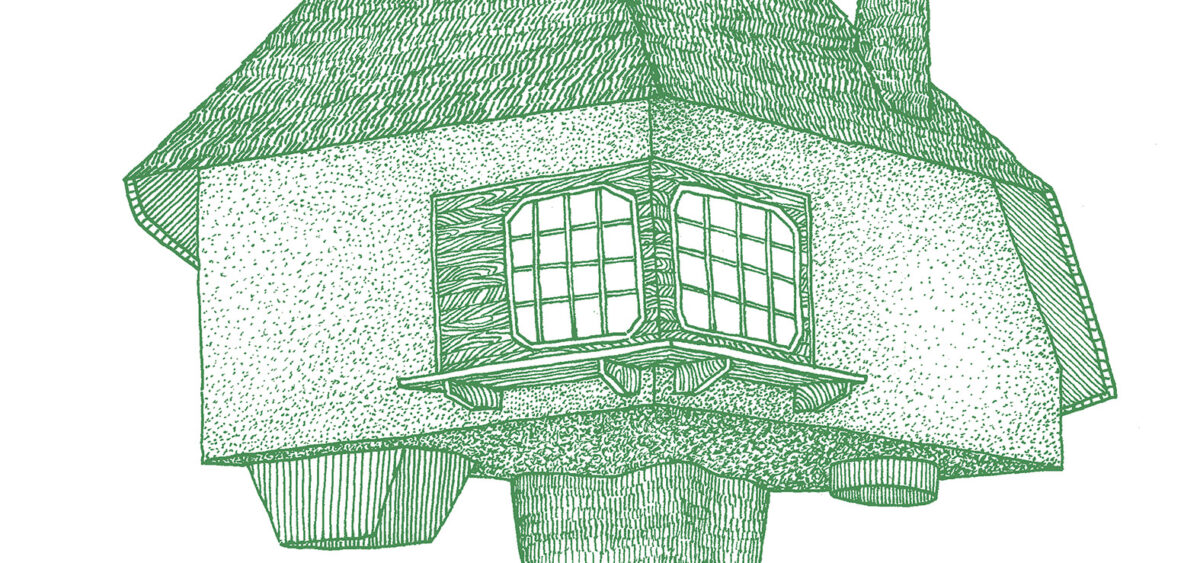
In order to build a tree house, it is not necessary to have access to massive budgets or extensive knowledge in the field of architectural engineering. Sometimes, all we need is a little bit of wood, determination and… an application submitted to the right local authority, but let’s forget that last item for the time being.
The fundamental issue we need to address is, of course, the choice of the right tree or group of trees to build on or around. Specialists consider walnut, oak, ash, lime, apple and beech trees to be best for this purpose. The tree should be at least 50 years old. It should also be healthy, which can be confirmed by a friendly tree surgeon – surely we all have at least one arborist in our circle of friends. We should also remember not to damage the tree itself and to allow it to keep on growing freely.
The next step is to decide at what height to place the platform the house will be set on. It is worth keeping in mind that trees are always moving, and that their angle of lean is usually relative to their height. This is why statistics indicate that the house should not be set too high up – the norm is somewhere between 1.5–2 metres from the ground. This should also minimize the harm done to those who inevitably fall out of it.
There are three basic strategies for managing the weight of the new object. The first involves the construction being supported on wooden beams or columns independent of the tree trunk, which only serves to stiffen the whole structure. Purists tend to say that a house that stands on its own separate legs is not a true tree house. There is some truth to this, but on the other hand, the decision to keep the construction free of the tree trunk helps us to minimize the risk of the living tree being injured or developing diseases. The second option is to suspend the house from the branches. Theoretically, this is possible in the case of very small and light houses, but it is also the most unsafe and risky option. The classic solution is to bind the construction to the tree trunk, or to several neighbouring tree trunks.
In order to secure the construction firmly it is best to use steel pins. According to guidelines issued by the Association of American Tree House Designers, they should be about 60 centimetres long and screwed into the trunk half-way. Bark can then grow around the exposed parts of the pins, allowing the tree to evolve freely. These elements will support the beams that will become the overall construction of the house. In the case of designs that are based around a single tree, these should be additionally supported by wooden struts/braces; parallel elements that link the horizontal beams and the trunk. If the tree house is to be supported by several trees, the horizontal elements can be spaced so that the tree house is secured with these sorts of structural supports.
Smaller beams should be attached at a right angle to wooden beams, creating a framework to support the planks that will act as the floor of the tree house. The remaining elements of the construction then become mostly a question of what the house builders fancy, or imagine the house should look like.
The walls and roof will usually be constructed as a light wooden structure – an arrangement of appropriately strengthened columns and beams connected in several places, which we then cover in planks or medium-density fibreboard (MDF), and secure with insulating foil in order to stop water getting inside the house. It is worth finishing the house using natural materials, so as not to have it clash with its surroundings. It should instead be a source of visual delight for all those who find themselves in or close to it. Good luck!
Translated by Marek Kazmierski








